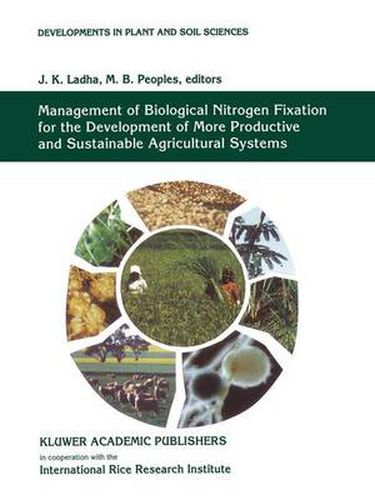Readings Newsletter
Become a Readings Member to make your shopping experience even easier.
Sign in or sign up for free!
You’re not far away from qualifying for FREE standard shipping within Australia
You’ve qualified for FREE standard shipping within Australia
The cart is loading…






This title is printed to order. This book may have been self-published. If so, we cannot guarantee the quality of the content. In the main most books will have gone through the editing process however some may not. We therefore suggest that you be aware of this before ordering this book. If in doubt check either the author or publisher’s details as we are unable to accept any returns unless they are faulty. Please contact us if you have any questions.
Table 1. Global allocation of arable land between different com- modities Globally, cereal cropping dominates cultivated land Commodities’ Proportion of land area use (around 50% of total area, Table I). The remain- (%) ing arable land is used for production of oilseed, fibre, or food and cash crops. In addition, vast areas are Cereals maintained under temporary or permanent pasture for Wheat 16 forage production (2-3 fold greater than the total area Rice 10 under cultivation and permanent crop; Table 1, Fig. Maize 9 O. All cultivated crops, except for legumes (pulses All other cereals 13 and legume oilseeds) require the soil to provide rel- Total 48 atively large amounts of nitrogen (N). It is necessary for the three most important cereals, wheat (Triticum Legumes aestivum), rice (Oryza sativa) and maize (Zea mays), Legume pulses 5 1 to take up 20 to 40 kg soil N ha- over a period of 3 Legume oilseeds 6 to 5 months to satisfy the N requirements of the seed and supporting vegetative structure for each tonne of Total II grain produced (e. g. Fig. 2; Myers, 1988). Produc- tive pastures on the other hand may assimilate> 100 Other crops kg N ha -\ each annum, of which 50 to 90% will be Other oilseeds 6 consumed by livestock in intensively grazed systems Beverages I Tobacco 7 (Ledgardy, 1991; Thomas, 1995).
$9.00 standard shipping within Australia
FREE standard shipping within Australia for orders over $100.00
Express & International shipping calculated at checkout
This title is printed to order. This book may have been self-published. If so, we cannot guarantee the quality of the content. In the main most books will have gone through the editing process however some may not. We therefore suggest that you be aware of this before ordering this book. If in doubt check either the author or publisher’s details as we are unable to accept any returns unless they are faulty. Please contact us if you have any questions.
Table 1. Global allocation of arable land between different com- modities Globally, cereal cropping dominates cultivated land Commodities’ Proportion of land area use (around 50% of total area, Table I). The remain- (%) ing arable land is used for production of oilseed, fibre, or food and cash crops. In addition, vast areas are Cereals maintained under temporary or permanent pasture for Wheat 16 forage production (2-3 fold greater than the total area Rice 10 under cultivation and permanent crop; Table 1, Fig. Maize 9 O. All cultivated crops, except for legumes (pulses All other cereals 13 and legume oilseeds) require the soil to provide rel- Total 48 atively large amounts of nitrogen (N). It is necessary for the three most important cereals, wheat (Triticum Legumes aestivum), rice (Oryza sativa) and maize (Zea mays), Legume pulses 5 1 to take up 20 to 40 kg soil N ha- over a period of 3 Legume oilseeds 6 to 5 months to satisfy the N requirements of the seed and supporting vegetative structure for each tonne of Total II grain produced (e. g. Fig. 2; Myers, 1988). Produc- tive pastures on the other hand may assimilate> 100 Other crops kg N ha -\ each annum, of which 50 to 90% will be Other oilseeds 6 consumed by livestock in intensively grazed systems Beverages I Tobacco 7 (Ledgardy, 1991; Thomas, 1995).